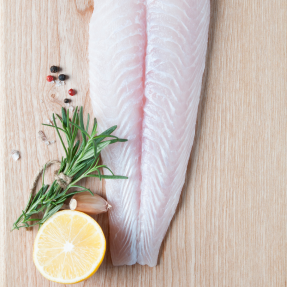[Industry news] Vietnam pangasius export turnover in 2017 was expected to reach $1.8 billion
06 January 2018
Vietnam’s catfish (pangasius) export turnover in 2017 was expected to reach $1.8 billion, an increase of 4 percent over the year before, according to the Vietnam Association of Seafood Exporters and Producers (VASEP).
The domestic catfish price began escalating in early 2017 and continued the upward trend in the last months of the year, bringing attractive profits to farmers. With the current price of VND25,000-27,000 per kilo, farmers can make a profit of VND4,000-6,000 per kilo.
In some provinces, farmers could sell catfish at VND29,500 per kilo in December, while the price was just VND21,000-22,000 per kilo in the same period last year.
Normally the domestic catfish price goes down in the last months of year when exporters have fulfilled signed contracts.
However, unlike previous years, this year exporters were still busy fulfilling contracts, while the material supply was short.
| In 2017, the catfish farming area in Mekong Delta was 6.078 hectares, an increase of 3.1 percent compared with the same period last year, and the 12-month output was 1.252 million tons, up by 5.4 percent. |
In 2017, the catfish farming area in Mekong Delta was 6.078 hectares, an increase of 3.1 percent compared with the same period last year, and the 12-month output was 1.252 million tons, up by 5.4 percent.
Huynh Quang Khap, a farmer in Chau Phu district in An Giang province, said: “I sold fish in my two ponds at VND28,500 per kilo, the highest level for many years. The catfish price dropped so dramatically in previous years which caused losses. Now, as the price has risen, we don’t have much fish to sell.”
Nguyen Tan Phong, director of Dai Thang Cooperative in Hau Giang province, also said he sold 200 tons of fish at VND28,500 per kilo. With the production cost of VND22,000 per kilo, farmers can make huge profits.
Vietnam’s catfish exports continued increasing in 2017, but some big changes in target export markets occurred.
The exports to the US decreased by 10 percent and the sharp export decrease began when the US officially applied the inspection program under which 100 percent of catfish imports from Vietnam have to undergo examination.
Meanwhile, the EU market is unstable because of the media campaign launched in early 2017 which gave false information about Vietnam’s catfish.
In 2011, the EU and US consumed 29.14 percent and 18.37 percent, respectively, of Vietnam’s catfish exports. At that time, only 3.07 percent of exports headed for China – Hong Kong.
In 2017, China surpassed the US to be the biggest importer of Vietnam catfish with import turnover of $420 million, up by 37 percent over the year before.
(Source: Vietnamnet)





![Demystifying Pangasius: Debunking Common Myths and Misconceptions 3 41 [All in Fillets] 2901 1 HIGH](https://www.vinhhoan.com/wp-content/uploads/2024/06/41_All-in-Fillets-2901-1-HIGH-683x490.jpg)




